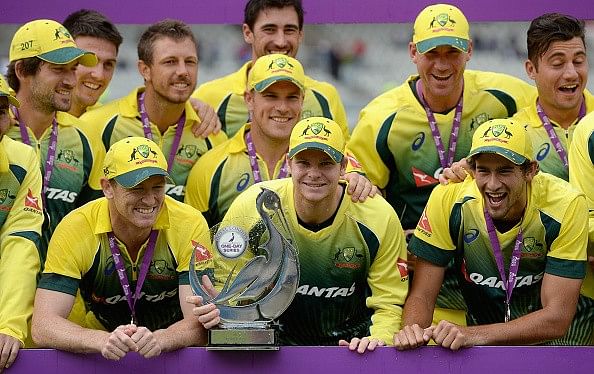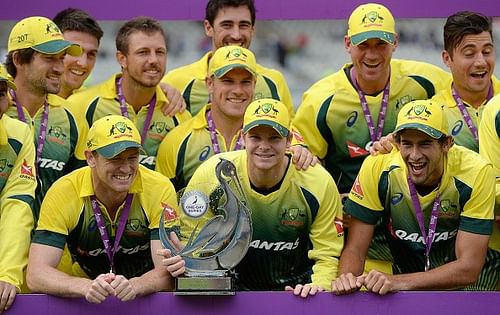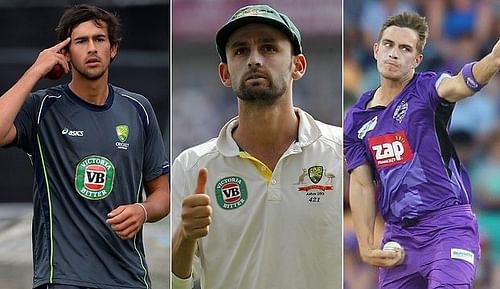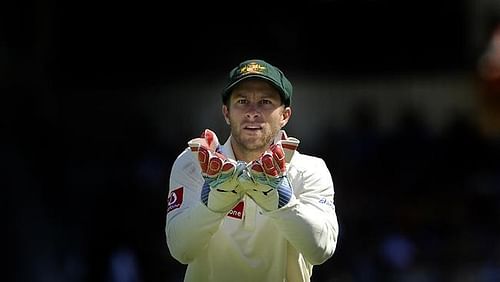
5 talking points: the familiar sight of a triumphant Australia in ODIs

How often have we seen this? It's the ODI tournament decider. The grand finale. But it's against Australia. So, what do we have? An awfully prosaic one sided affair dominated by the rampant Aussies. The final of the Royal London One-Day tournament between England and Australia was exactly that, bringing back memories of tournaments past. Much like the World Cups in '99, '03, '07 and '15, here was yet another Australian team breaking the hearts of a sell-out Old Trafford crowd.
Despite the refreshing change in the England ODI team and their considerable progress since their early World Cup exit, they just weren't good enough to fight off a commanding Australian team. But what made this emphatic Australian victory commendable was the fact that they accomplished this feat despite losing half of their World cup winning squad to injuries and retirements.
In fact the team which won the final on Sunday comprised just four of the World Cup winning team. And Steve Smith, much like his predecessors, started off his captaincy career with an ODI series victory.
Yet, everything's not fine and dandy with the new Australian team. Here are a few post-tour talking points to consider.
- The fast bowling cartel

The inexperience in their bowling attack showed as not one member of their celebrated fast bowling cartel was able to bowl with control and accuracy. In the first four ODIs, Mitchell Starc, Pat Cummins, James Pattinson, Nathan Coulter-Nile and John Hastings all leaked runs with the new ball.
Though you could attribute Starc's waywardness to fatigue, Pattinson looked a shadow of his former self, struggling to adapt to his remodelled action. And Coulter-Nile was an unfortunate victim of yet another hamstring injury. The raw pace and aggression of Pat Cummins was perhaps the only silver lining in this pitch black cloud that hung over the young Australian pace cartel.
- The value of an attacking spinner
Australia flew leg spinner Cameron Boyce all the way from Brisbane to Cardiff (a distance of around 16500 km) to bowl a single over. Even Ashton Agar suffered a similar, if not as hapless, fate – bowling hardly 11 overs in the course of 5 ODIs. South Africa have realised it. So have England but Australia continue to persist with the foolhardy notion that you don't need a spinner in your ODI bowling attack. The Australian selectors and Coach Darren Lehmann still fail to understand the value of an attacking spinner.

Australia made scores as massive as 359 and 350 against India in the 2013 India tour and lost. They made 327 against South Africa in the Zimbabwe triangular series in 2014 and lost. They have often struggled to defend totals of over 300 on flat pitches. A problem that an attacking spinner can help solve but one that Australia don't want to embrace.
- Inability to play spin
A bit of lateral movement through the air and the batsmen are bewildered as we saw throughout the Ashes. A prod here. A poke there. And you have nicks flying to the ever-eager slip cordon. The Australian team looked all at sea in the 3rd ODI at Old Trafford when there was a little bit of help for the spinners. The cavalier batsmen took the usual cockeyed approach as they unsuccessfully tried to hit out.
- Wade's keeping

Though Matthew Wade was impressive and, at times, exhilarating with the bat, his glovework remains ordinary. Especially while keeping to spin. His technical flaws with the gloves continue to keep him out of the Australian test side. In the 3rd ODI in Manchester, he missed an important stumping opportunity which would have produced the priced wicket of Eoin Morgan. But Ashton Agar and Australia were left to wonder, "What if...?"
- Whatever happened to Aussie aggression?
| ODI | Australia | England |
|---|---|---|
| 1st ODI at Southampton | 54-0 | 61-0 |
| 2nd ODI at Lord's | 46-1 | 57-1 |
| 3rd ODI at Manchester | 51-1 | 57-1 |
| 4th ODI at Leeds | 39-3 | 73-1 |
| 5th ODI at Manchester | 36-2 | 40-3 |
Throughout the series, England outscored Australia in the 1st powerplay. What makes for interesting viewing is the fact that England scored more than Australia even in the final game, despite losing 3 early wickets and a concussed Morgan.
After being recalled into the side with the injury to Warner, Finch understandably took his time himself having just come back from a series of injuries. And as the series went on, Burns' sequence of scores made for interesting viewing (44, 22, 9, 2, 0). But what was most surprising was the captain Steve Smith. Usually a busy player known for his aggressive stroke play and efficient strike rotation, Smith looked out of sorts throughout the series. Though George Bailey had a pretty productive tournament, even he struggled to get the ever-important ones and twos.
Only Glenn Maxwell was at his usual best with a single here and a double there along with the customary reverse sweep and other typically audacious shots.
It was no surprise but Australia certainly missed the services of James "the Finisher" Faulkner in the ODIs and the lone T20I. Though they called on the young Marcus Stoinis as replacement, he obviously failed to have the same effect. Midway through the series, they lost Warner, Watson and Coulter-Nile too.
Yet, Australia were able to wrap up yet another bilateral ODI series with a resounding victory. And in an otherwise forgettable and unsatisfying Ashes summer with mostly one-sided blowouts, that is what makes Steve Smith's first outing as captain all the more noteworthy and exemplary.